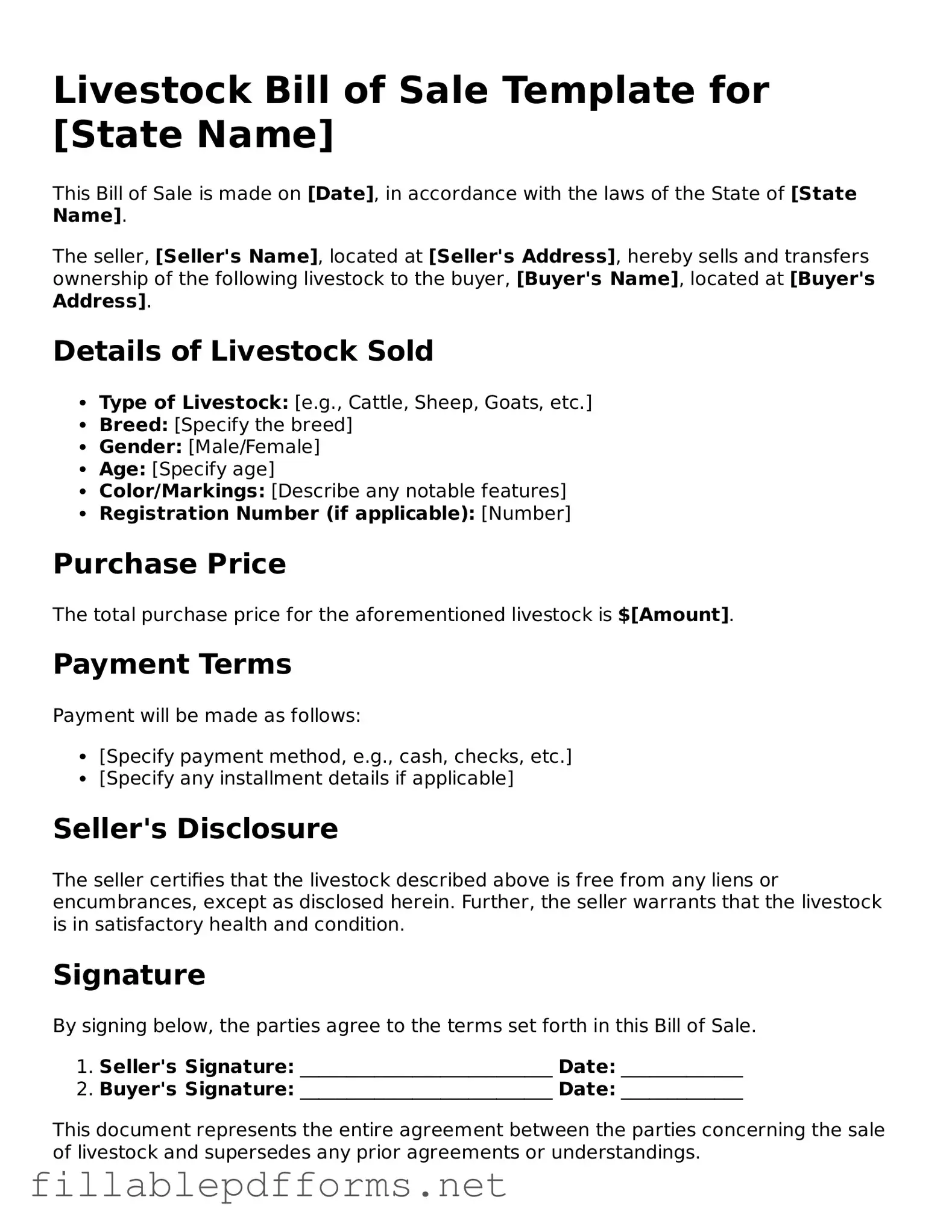Blank Livestock Bill of Sale Template
The Livestock Bill of Sale form is a legal document that records the transfer of ownership of livestock from one party to another. This form serves as proof of the transaction and includes essential details such as the buyer's and seller's information, a description of the livestock, and the sale price. Proper completion of this form is crucial for both parties to ensure clarity and avoid disputes in the future.
Launch Editor Here
